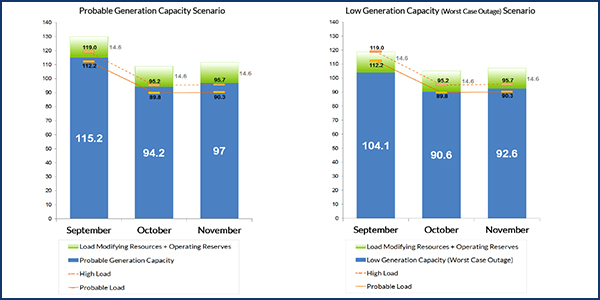Stakeholders would prefer MISO use RTO-specific data as much as possible as it considers whether and how to update its value of lost load (VoLL), Michael Robinson, principal adviser of market design, told the Market Subcommittee on Thursday via teleconference.
MISO’s VoLL is currently a flat $3,500/MWh and is used to set the upper value of the operating reserve demand curve and LMP cap. It essentially determines at what price customers would prefer interruption to paying the marginal cost of service. The RTO has been considering how it can vary the value to account for differences in season, time of day, region and load type, among other factors. (See MISO Revisits Scarcity Pricing Rethink.) Robinson opened the discussion with a lengthy analogy about trying to find the right type of ax for felling a tree, but only having other types of axes.
The RTO proposed several options for refining the VoLL. Robinson said stakeholders showed little to no interest in using previous studies that did not use Midwest-specific data, including one done by London Economics on ERCOT’s VoLL.
Rather, they prefer that any analysis use the most recent data available out of MISO, including the possibility of doing a completely new study. This approach, however, would likely take up to a year and a half, Robinson said, and be “extremely expensive to conduct.”
Customized Energy Solutions Ted Kuhn asked whether the effort would be “a waste of time.”
Independent Market Monitor David Patton chimed in, saying updating the VoLL is “as far from a waste of time as any [effort] I can think of.” He said MISO needs to ensure the value of reliability is embedded in its prices and that scarcity prices “are not close to being right.”
“This is critically important work,” Patton said.
MISO will continue to narrow down its potential approaches based on stakeholder feedback, which is due Sept. 30, and further discuss the issue at the subcommittee’s meeting next month.
Fall Seasonal Outlook
MISO expects adequate resources for the upcoming fall season, though planned generator outages are expected to rise this year because of delays related to the COVID-19 pandemic.
The National Oceanic and Atmospheric Administration is predicting higher-than-usual temperatures for MISO South and parts of the RTO’s eastern footprint this fall, Eric Rodriguez, resource adequacy coordinator, told the subcommittee. The RTO’s preliminary expected peak load for the season is 113 GW, compared to an expected 152 GW of available capacity.
Planned outages are expected to peak in mid-October, as they usually do, but MISO expects them to be slightly higher this year, as generators rescheduled their spring maintenance during the height of the pandemic, Rodriguez said. Still, the highest risk for a maximum generation event is in September, when a worst-case scenario of higher-than-expected forced outages and demand could lead the RTO to narrowly exceed its 14.6 GW of available load-modifying resources and operating reserves.





